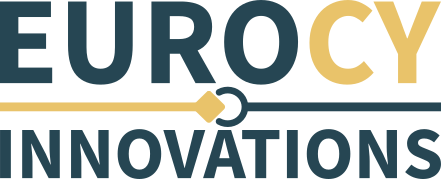11. Examples of Smart Buildings applications with IoTs
12. Examples of Smart Buildings applications with IoTs
13. Examples of Smart Buildings applications with IoTs
15. Light Control
16. Temperature Control
17. Air Quality Monitoring
18. Security and Space Usage
19. (Drinking and Waste) water monitoring and control
20. Energy consumption monitoring and control
21. Appliances control
14. IoT Scenarios Can you think of your own IoT application scenarios?
22. Health - related Monitoring
8. IoT Actuators: switches, lights, plugs, door logs, motorized valves, pumps, fans, sprinkler IoT Sensors: Thermostats (temp. & humidity), motion sensors, air quality sensor, electricity meters, cameras, luminosity sensors, smartphones, wearable devices, refrigeration monitoring IoT as components Gateways
9. How IoT Works Sensors/actuators Storage units Communication units and gateways Processing units (data analysis, monitoring, control, event detection, etc.)
7. IoT deployment in (smart) buildings – General “Smartness” in general implies some form of built - in intelligence; that is, the capacity to receive information (sense), analyse it (think), generate new knowledge (learn) and make reasonable and actionable decisions (act autonomously). The terms “intelligent” and “smart” are in many cases over - used today, with some level of exaggeration. Current legacy Building Management Systems (BMS) or Building Automation Systems (BAS) do not go any close to turning the buildings into smart infrastructures.
1. Project: ECVET Training for Operators of IoT - enabled Smart Buildings (VET4SBO) - 2018 - 1 - RS01 - KA202 - 000411 The basics for the operation of smart and sustainable buildings using Internet of Things
23. Spatial Intelligence in Action Model relationships and interactions between occupants, building places and devices. Monitoring how a space is being used. Optimise areas ranging from heating and cooling to room - booking management. Enable even more advance functions, like: - having a conference room completing the attendance sheet automatically and informing you of who is missing. - smart spaces can also translate the transcription for meeting attendees that speak different languages.
10. Examples of IoT deployments in buildings IoT deployments in buildings fall into four categories: 1. Energy: e.g. wireless energy consumption monitoring. 2. Equipment: e.g. optimize lighting and HVAC use. 3. Environmental quality: e.g. measuring particulate matter or CO 2 . 4. People or spaces: e.g. measure occupancy, space utilisation or how many people have passed through a certain entrance.
2. What is “Internet of Things” “Internet of Things” is a giant network of connected “things”. “Things” are people (still through personal communication devices), physical devices and components (e.g. mobile phones, coffee makers, washing machines, lamps, health monitoring devices, a jet engine of an airplane), virtual entities (e.g. a weather service, a movie, a flight booking service). Anything that has capability to connect to the internet and/or to other “things” and exchange data.
3. The history of “Internet of Things” The first use of the term “Internet of Things” was by Kevin Ashton, the co - founder of the Auto - ID Center at MIT, in a presentation he gave to Procter & Gamble (P&G) in 1999 Kevin Ashton was “selling” the radio frequency ID (RFID) technology to P&G's management, and called his presentation "Internet of Things" MIT professor Neil Gershenfeld's book, titled “When Things Start to Think” (1999), provided a clear vision of IoT although not using the exact term The idea of connected devices has been around since 1970s, in the areas of embedded computing The IoT ecosystem concept, however, became a reality in mid - 2010 when the government of China said it would make IoT a strategic priority in its five - year plan
4. Why “Internet of Things”? Your car can find the best route to take to a destination by talking to your calendar and the navigation system Your home lights can use the luminosity measurement on your mobile phone and turn on when it’s time Your heart monitoring wearable device can contact your doctor when needed A plant may inform the farmer when something goes wrong with the underline ground It is estimated that by 2030 the number of “things” (internet connected and data exchanging devices) worldwide may reach 125 billion [1] _______________________________ [1] “The Internet of Things: a movement, not a market,” IHS Markit, Tech. Rep., 02 2017.
5. From buildings... Buildings consist of various systems that are : complex interconnected ( interact to each other) consist of several components, such as: HVAC system (valves, fans, coils, filters, storage tank, heat pumps, chillers, etc.) Lighting system (internal/external lights, office lights, switches, curtains, etc.) Safety system (smoke/gas sensors, sprinkles, water tubes, pumps, emergency lighting, etc.) Security system (cameras, door entry, in/out board, etc.)
24. Quality of Service criteria Cost reduction: e.g. reducing the time - to - park for cars moving within a city, offers significant reduction of fuel and time costs for drivers, as well as pollution costs for the city. Energy efficiency: e.g. enabling a hotel building to choose the heating devices based on energy consumption parameters at the specific time, significantly reduces the overall consumption of energy. Users’ comfort (including time and performance properties): e.g. an older person whose house is smart enough to contact the doctor and provide info on vital signs, will feel much more comfortable within his/her own environment. Security, Environment Friendliness, etc.
6. To smart buildings A Smart Building is any building structure: Using automated processes (combines data and information in a non - trivial way) to automatically evaluate the state and control the building's operations Source : http://blueapp.io/blog/why - iot - is - the - best - solution - to - reduce - cost - in - smart - buildings/








